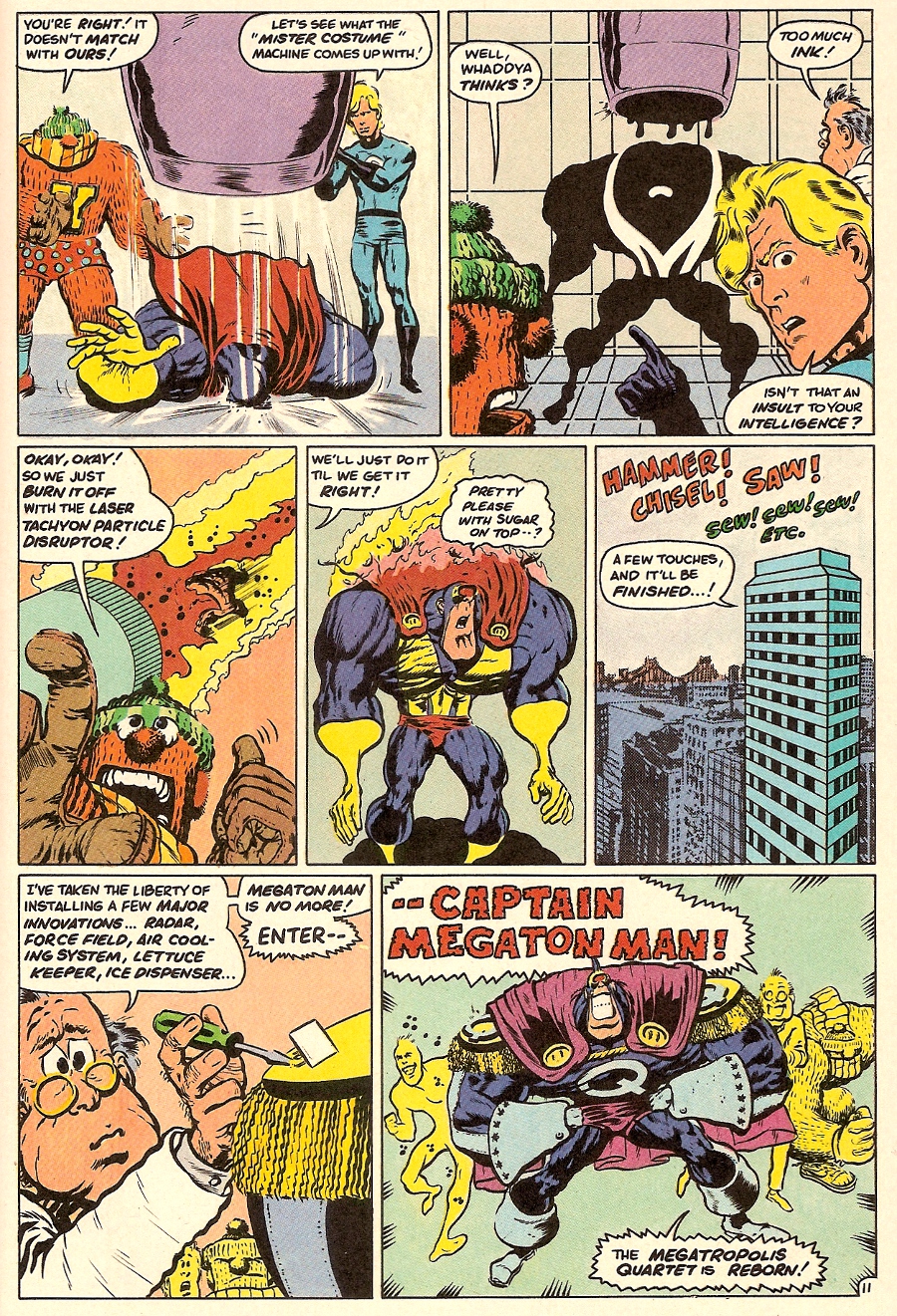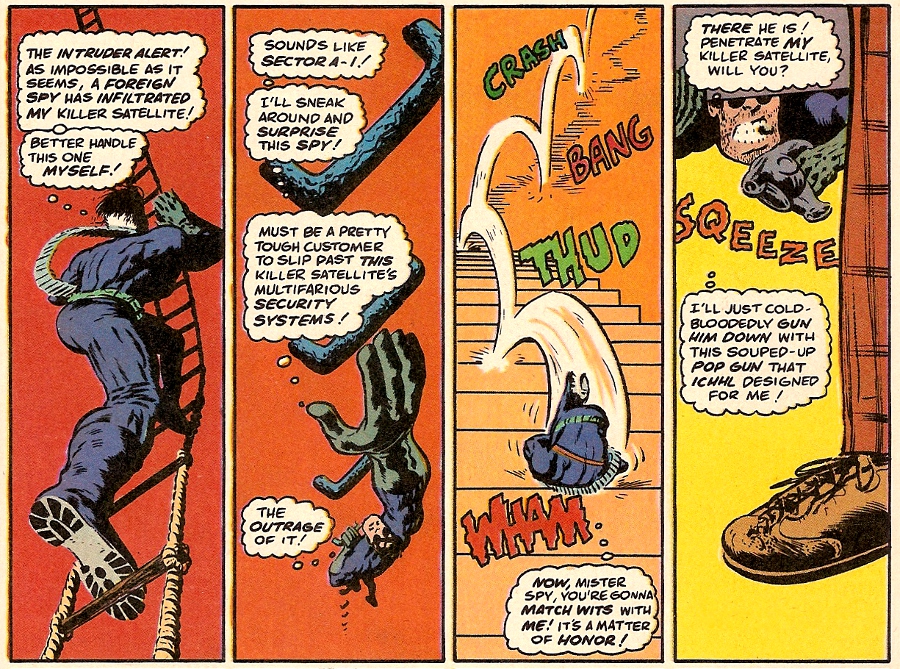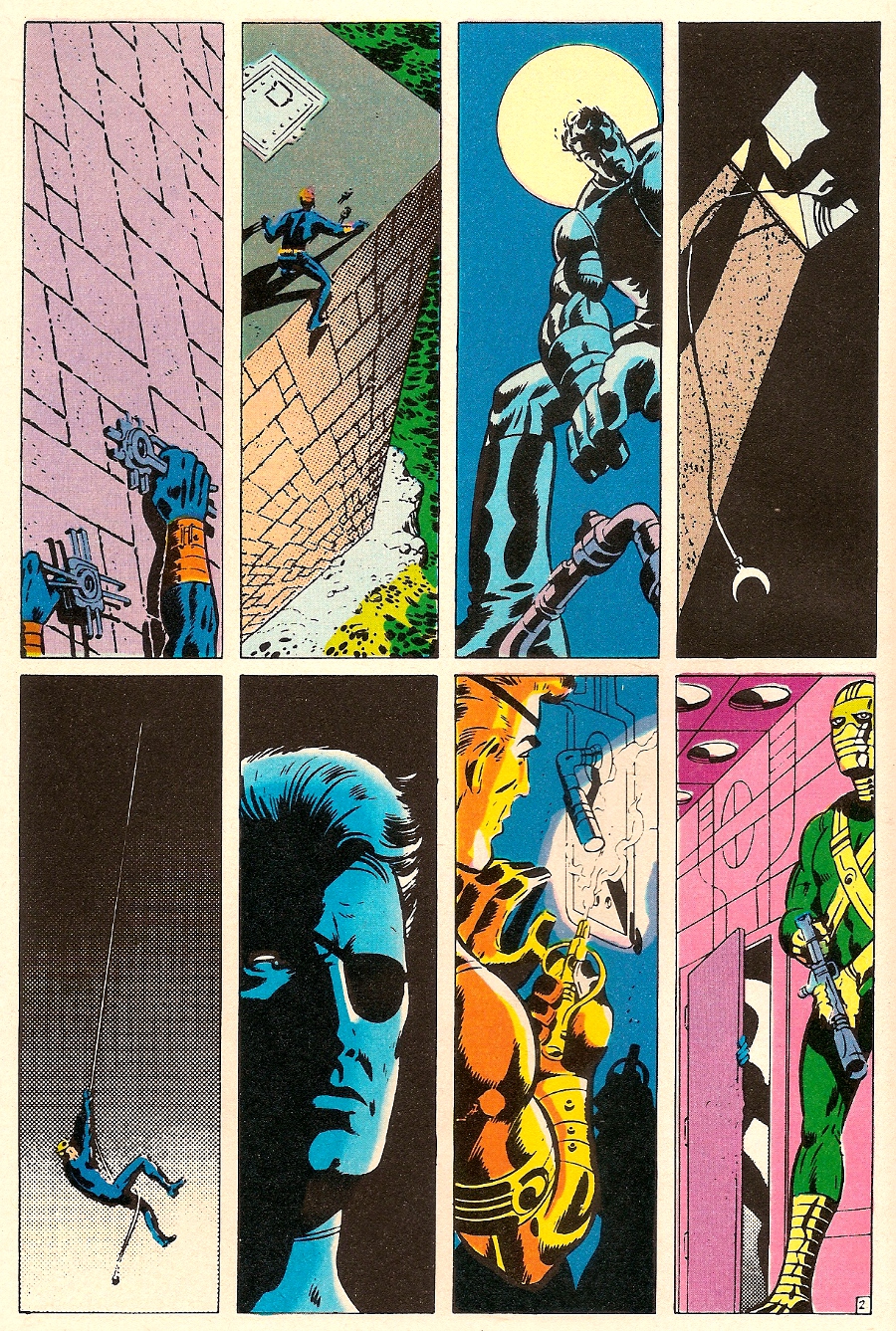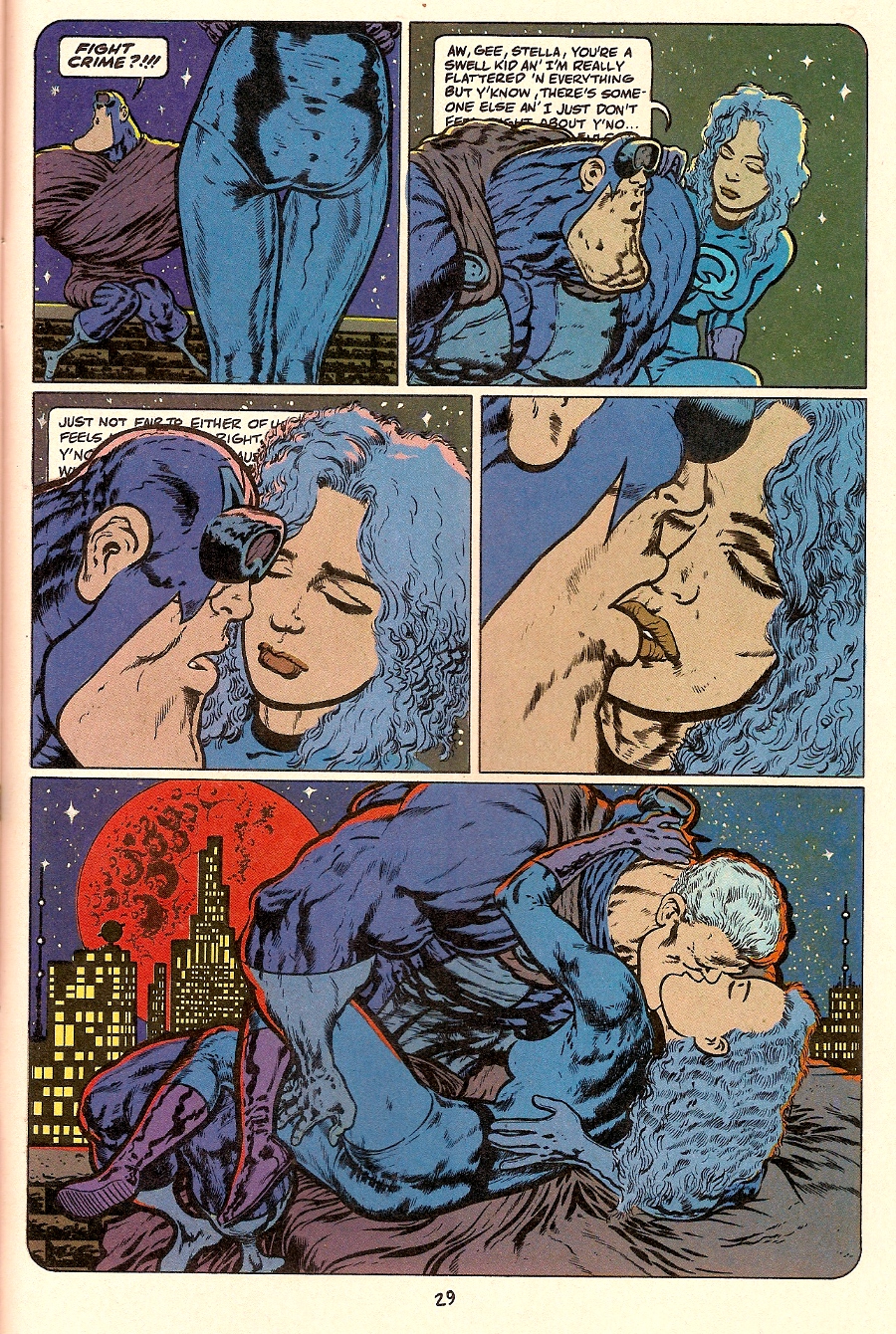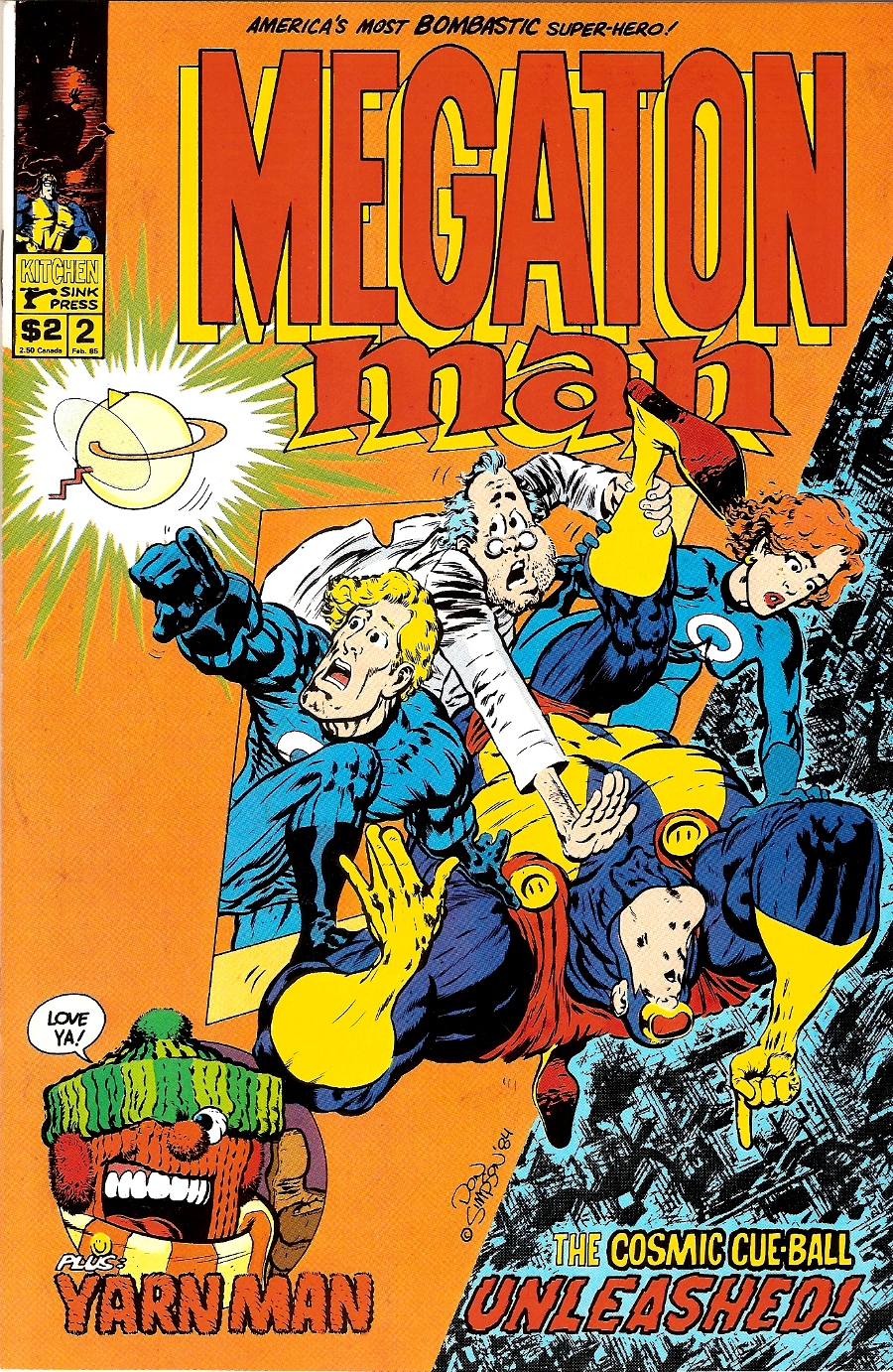 One of the reasons I write about 80’s comics so much is that it was a time of fundamental change in the comics industry, changing the way they were produced, printed, marketed and distributed.
One of the reasons I write about 80’s comics so much is that it was a time of fundamental change in the comics industry, changing the way they were produced, printed, marketed and distributed.
In the late 70’s, people had been talking about the imminent demise of comic books; the industry had shrunk to two big companies and a couple of tiny competitors hanging onto their dying niches. Â Marvel and DC were circling the drain, creatively and financially, doing the same stuff over and over again to a smaller and smaller audience while Carter-era stagflation drove their production and distribution costs through the roof.
But the 80’s changed all that. By 1985, we were seeing a new boom, with the direct market producing comics for older, (slightly) more sophisticated readers, new production techniques producing gorgeously colored comics on brilliant white paper instead of cheap pulp, and a slew of independent publishers and exciting young artists and writers taking risks and doing new things. And they were so successful that the moribund Big Two had to start updating their own product, as well, lest they be left in the dust.
Which is not to say that everything the independents did was new and original. In fact much of it was produced in direct reaction to DC and Marvel. Take, for example, Megaton Man from Kitchen Sink Press.
Written and drawn by Don Simpson, Megaton Man was a straight-up parody of both DC and Marvel. I missed the first issue, so I never knew his origin, but the rest of the set-up was fairly straightforward. Megaton Man patrolled the city of Megatropolis, fighting crime and whatever, while working as a reporter for a daily newspaper under the name Trent Phloog.
The comic followed the parallel stories of Megaton Man and fellow reporter Pamela Jointly (whom Megaton Man loved from afar) who quit her job as columnist for The Manhattan Project to move to a small college town and start her life over, accompanied by Stella Starlight, a.k.a. The See-Thru Girl of the Megatropolis Quartet.
Simpson wrote and drew the Megaton Man scenes in a style that crossed Harvey Kurtzman’s early Mad stories with Lee/Kirby bombast, with some pointed satirical jabs at the pop culture of the times, like when Megaton Man tries to take Stella’s place in the Megatropolis Quartet, leading them to design him a new costume.
That second panel is a sharp elbow thrown at the black Spider-Man suit. On the other hand, the Pamela Jointly scenes were written from a slightly more realistic perspective, contrasting her “normal” life with the mad hijinks  of Megaton Man’s adventures. And in between, the comic lived up to its publisher’s name by throwing in a hodgepodge of parodies of different comics, from Doonesbury to Jim Steranko’s famous take on Nick Fury, Agent of Shield.
Here’s super-spy Sergeant Sterankovitch from Megaton Man #4…
And here’s the sequence he’s parodying, from Nick Fury, Agent of Shield #1, June 1968.
As the series progressed, it was evident that Simpson had more ambition than simple parody, good as he was at it. He would switch from parody to drama and back seamlessly and without warning, such as the flashback scene where Megaton Man and the See-Thru Girl go on patrol together. Â He nervously resists her advances until she gives a hilarious speech about their tight costumes being the equivalent of nudity. “I can certainly see everything you’ve got! And it’s driving me crazy!”
And then suddenly…
In later issues, Simpson began to indulge his greater ambition with a back-up feature titled Border Worlds, a straight science fiction adventure. And after the initial run of Megaton Man ended with issue #10, Border Worlds was spun off into its own 7-issue series, which I’ll cover maybe next week.
But it’s Megaton Man who provided Simpson’s greatest success and was the well he kept going back to. There was a Return of Megaton Man limited series a couple of years after the original ended, and in the 90’s, Simpson formed his own company to publish new Megaton Man adventures before moving over to Image Comics.


